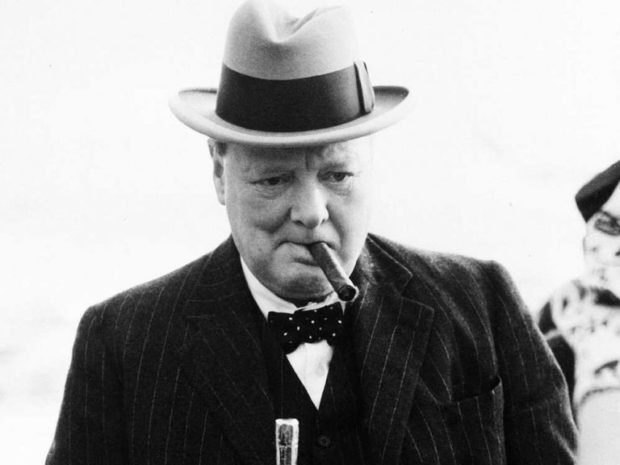Winston Churchill’s Gold Standard Folly

Winston Churchill’s résumé was remarkable enough to earn him the title of Renaissance Man. Sandhurst-educated soldier, journalist, painter, historian, world traveler, Nobel laureate, member of Parliament, President of the Board of Trade, Home Secretary, First Lord of the Admiralty, Secretary of State for the Colonies, Chancellor of the Exchequer, twice Prime Minister, statesman, war-time leader, world-class orator. Though he had his ups and downs, his failures as well as successes, he remains one of the most important and respected figures of the 20th Century.
To fully understand any person, we must embrace that individual’s life warts and all. No human is super-human. Everyone makes mistakes. Nobody knows everything. Sometimes even the best screw up.
One of the biggest screw-ups in Churchill’s storied career relates to a subject he never mastered—Economics. I am personally a friend and advocate of the gold standard, but I believe that when Churchill attempted to restore the British pound’s connection to the yellow metal, he erred in a way that produced monumentally negative consequences for Britain and the world.
That matters of money challenged Churchill showed up vividly in his handling of personal finances. He was a compulsive casino gambler, a poor stock market investor, and a constantly tardy debtor. He chronically overdrew his checking account. He purchased high-end wines, liquors, and cigars when he couldn’t afford them. He was often behind in his taxes. In his 2016 book titled No More Champagne: Churchill and His Money, historian David Lough revealed that the great man “lived for most of his life on a financial cliff-edge.” Luck, fame, and connections saved him from bankruptcy as much as anything.
Britain suspended the pound’s convertibility into gold during the calamity of World War I. Doing so allowed the government to print a volume of paper money its gold reserves wouldn’t otherwise permit. The value of the pound fell, and price inflation soared. In the early 1920s, a public debate began around whether Britain should return to the discipline of the gold standard.
Churchill initially opposed restoring gold backing. He thought paper money could be managed by smart planners. By the time he became Chancellor of the Exchequer (the equivalent of Treasury Secretary) in 1924, he changed his mind. When he introduced his first national budget in 1925, he called for a return to the gold standard. He advised Parliament:
We are often told that the gold standard will shackle us to the United States…I will tell you what it will shackle us to. It will shackle us to reality. For good or for ill, it will shackle us to reality. That is the only basis upon which we shall be standing, and I believe it to be the only basis which offers any permanent security for our affairs. That is my first broad reason. The foundation of Great Britain’s economic policy must be, as far as possible, based upon reality…I say that what is wanted in the general interest of the wage-earning classes of this country is a steady, trustworthy, honest, and, if possible, uniform standard of value.
The problem with the Churchill plan was not restoring gold’s place in the monetary system; it was fixing it at the pre-war rate instead of a rate that reflected the paper pound’s deterioration. Inflation cut the pound’s value, but Churchill was too proud to admit it, so he restored gold convertibility at a rate that pretended the government had never inflated. That translated into pegging the pound against the American dollar at £1 = $4.86 instead of the free market rate of £1 = $4.40.
Churchill wanted to base Britain’s economic policy on “reality” but that’s not quite what he delivered in 1925. The reality was that the pound wasn’t worth what his rate declared.
The late Austrian School economist Percy Greaves explained this flaw in his excellent book, Understanding the Dollar Crisis. Greaves, Murray Rothbard, Henry Hazlitt, and Hans Sennholz were the four best economists I ever personally knew. They were all in agreement on Greaves’ analysis of Churchill’s error:
When England went back on the gold standard in April 1925, with the pound valued at $4.86, she had raised the value of the pound about 10 percent above its average value of about $4.40 on the open market the previous year. This meant that England, which operated largely as a factory, importing raw materials and exporting finished goods, had raised its export prices by roughly 10 percent. For Americans, buying a British product that cost a pound sterling, the price was now $4.86 instead of the earlier $4.40.
This seemingly minor price-fixing mistake cascaded into a series of destructive results. British export industries suffered hugely, especially coal, leading to strikes and slowdowns.
At the pound’s artificial exchange rate Churchill fixed against gold and the dollar, Britain would have lost gold to the US. To help…
Read More: Winston Churchill’s Gold Standard Folly

